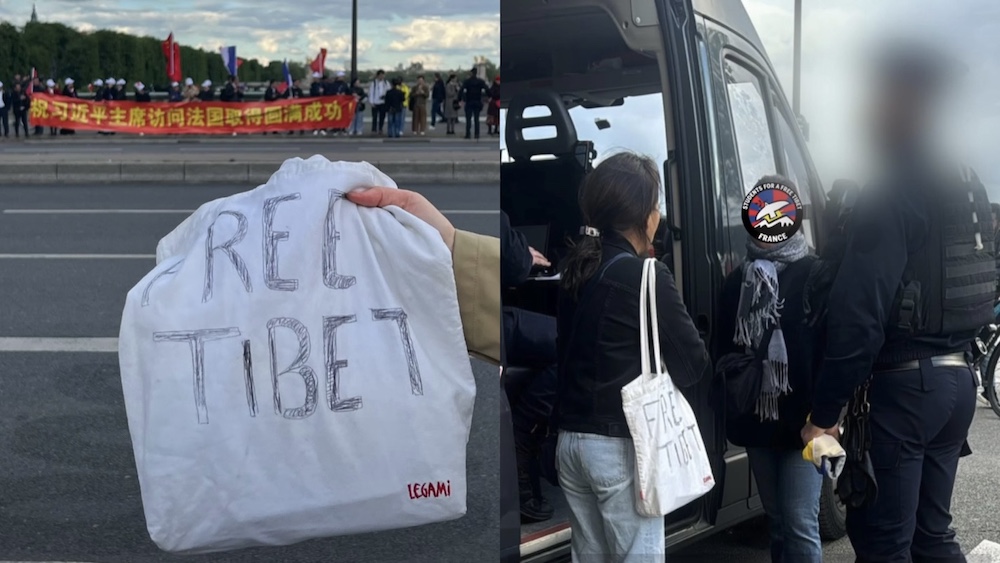 The Tibet Foundation’s Art and Culture programme held a seminar and open discussion on Sino-Tibet Relations on 23 January 2003.
The Tibet Foundation’s Art and Culture programme held a seminar and open discussion on Sino-Tibet Relations on 23 January 2003.
Tsering Dhondup Gonkatsang of Oxford University was in the chair, with Sonam Tsering Frasi, elected Member of the Assembly of Tibetan People’s Deputies representing Tibetans residing in Europe, and Tsering Shakya, author and Fellow in Tibetan Studies at the School of Oriental & African Studies, London University.
Recently there has been renewed hope that dialogue between Dharamsala and Beijing could produce a breakthrough. While Tibetans hope for peaceful negotiations the fear is present that Chinese talks of discussions are just window dressing propaganda statements.
Tsering Shakya commented, “The political history of Tibet is about how to live with China. China is so huge and powerful; it can dictate terms to Tibet. I am less hopeful than many people…
Railways could be the final straw – a total and final solution by the Chinese ethnically, economically and territorially … the expansion of the ethnic Chinese into Mongolia has followed the railway lines. Railway stops produce instant towns.
In 20 years time there could be 20 – 30 million Chinese in Tibet.”
He went on to say that, “Within China itself the economic miracle will be followed by more demands for political rights. Tibet is changing with urbanisation and education. Both could produce a rise in Tibetan nationalism, so the question is: “What will China do?” Will there be a brutal suppression or will there be liberal and humane negotiation?”
A major issue for the exile community is that it is always the Tibetans who have to make sacrifices. The question was raised, “Why is it never the Chinese who make concessions?”
Tsering Dhondup argued that, “The surrounding countries will not support armed resistance by Tibetans in exile. China doesn’t have the western reflex reaction to body bags. Although some younger Tibetans still ask, ‘Give me the needle and I will find the elephant’s eye!’ ”
Sonam Frasi, often described as “an MP in tune with the government-in-exile’s thinking,” emphasised the Tibetan willingness to accept a negotiated settlement.
“At the back end of 2001, informal contacts were made. A delegation went to Tibet in August 2002 with no talks in plan, but to maintain contacts.” He emphasised how Tibetans in exile at least live in a free country, Tibetans in Tibet are not all right. “It may sound grand to say that we have something to give up, but the truth is that we come to the table with no chips to bargain with.”
Following an 18-day tour of China and Tibet, Lodi Gyari and Kelsang Gyaltsen, envoys of the Dalai Lama based in the USA and Europe respectively and their aides Bhuchung Tsering and Sonam Dakpo, then travelled to Dharamsala, on 27 September 2002.
Sonam believes that, “We are now at the stage where the status remains that the government in exile is still willing to negotiate with certain conditions. The trade-off for not accepting complete independence is that firstly all three provinces of Tibet will become a unit and secondly there will be a democratic system in association with the Chinese government. The Chinese have been aware of this since 1987, we are willing to accept a negotiated settlement.”
Tsering Shakya offered two perspectives on how the Chinese view Tibet. “The Communist Party including the old leadership, the old generals who fought in Tibet claim .our people died for Tibet, why should we tolerate these dissidents?
People in general don’t care. Tibet is not like Hong Kong. The situation is more akin to the British and India in 1947.”
Sonam commented that his starting point for self-rule is to maintain Tibet for what it is.
“People think Tibetans are giving in too much to the Chinese, but we do not have a rosy future.”
The most hotly debated issue of the evening was the manner in which the prime minister of the Tibetan government- in-exile, Samdhong Rinpoche, released a circular on 30 September 2002. He had urged “all Tibetans and friends of Tibet” to refrain from public protest during President Jiang Zemin’s upcoming visit to the USA and Mexico, because “it is of utmost importance that the worldwide Tibet movement is able to arrive at a unified position on important issues such as this.”
A questioner demanded, “Why should we refrain from protest? Was this ever voted upon?
Sonam Frasi explained that, “unfortunately the position of the Tibetan government-in-exile has been slightly misunderstood. If we take a global point of view we should not be unhappy about this. Although we understand that some Tibet Support Groups were unhappy about this.
Previously China and Tibet accepted negotiators and arranged a time and a place to talk. Were they bluffing when they pulled back at the last minute? From 1993 to December 2001, there were no talks at all. We wanted the Chinese to talk to the Dalai Lama. When this did come about, the circular was a request not a diktat. It was a proposal to refrain from demos when Chinese officials went overseas. We do not want to offend the same Chinese officials that we are going to talk to.” For Sonam it didn’t make sense to throw eggs while trying to start a dialogue.
Sonam was challenged on the actual process for authorisation of the circular and questioned if it had been approved by the Tibetan Parliament or by the cabinet in a vote?
Sonam defended it as “It was issued as a normal administrative experience.”
Shakya Tsering took a more critical line arguing that, “The circular was a misreading by Dharamsala of the Chinese position. When China said they did not want the issue internationalised, the cabinet issued the circular to the Tibet Support Groups. But China meant they didn’t want the high profile international visits of His Holiness the Dalai Lama. Since then the Dalai Lama has been to Mongolia and now there has been the developments in the Taiwanese position.
Both sides did the opposite of what they expected.
Dhondup Tsering concluded that, “Tibet was an independent country, now occupied, but seeking genuine autonomy. The Tibetan culture has relevance not just for Tibetans, but for the Chinese and the rest of the world as well. All is not lost, things change, let us hope for a silver lining!”
Tibet Foundation Newsletter is a quarterly publication of Tibet Foundation for its members and supporters. For further information about the Foundation or the publication, please visit www.tibet-foundation.org









